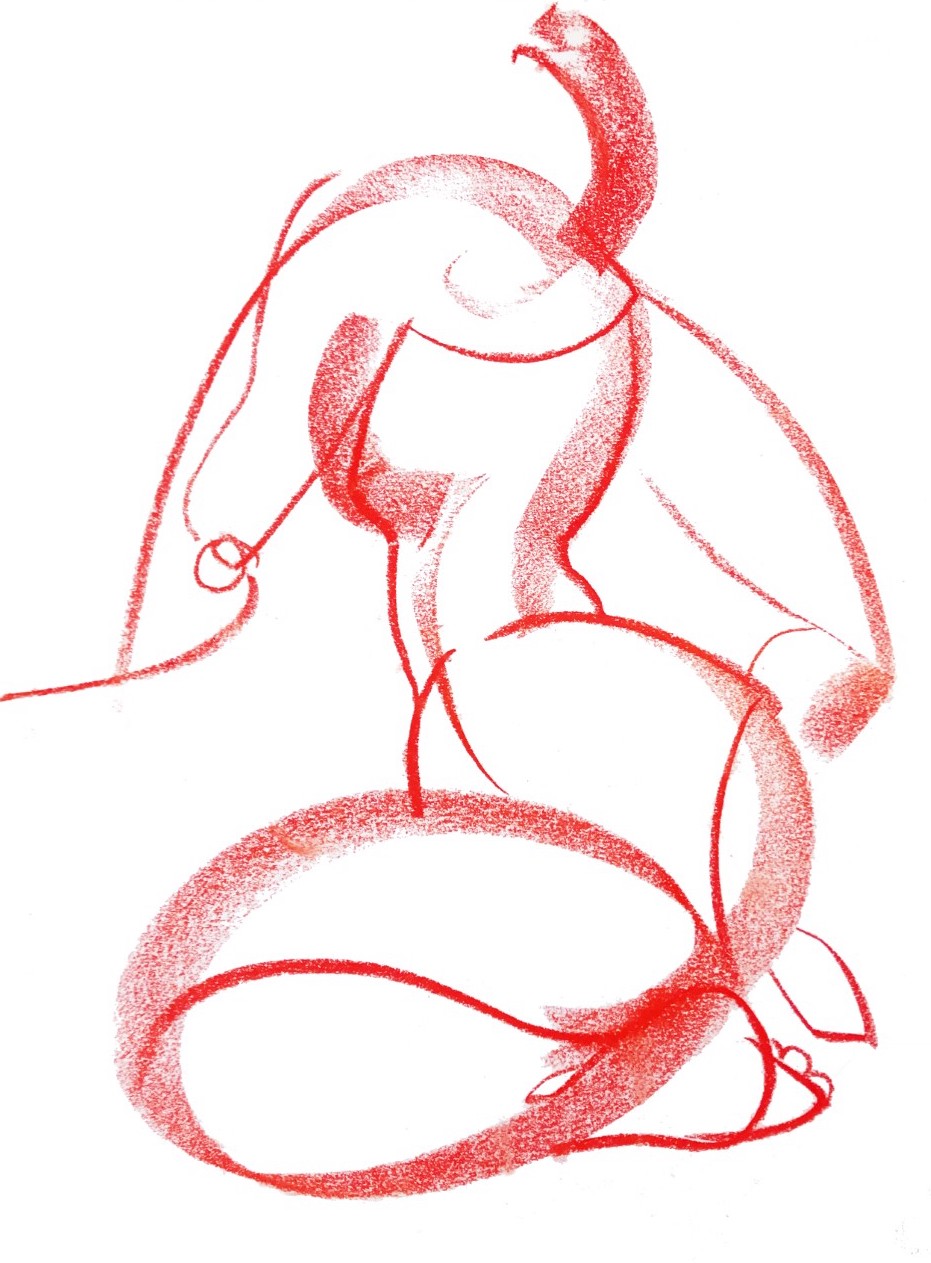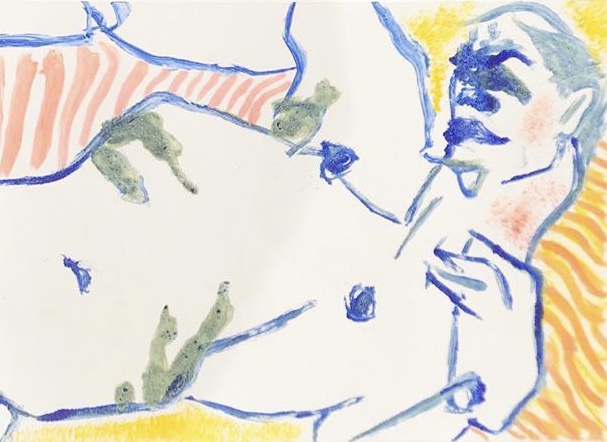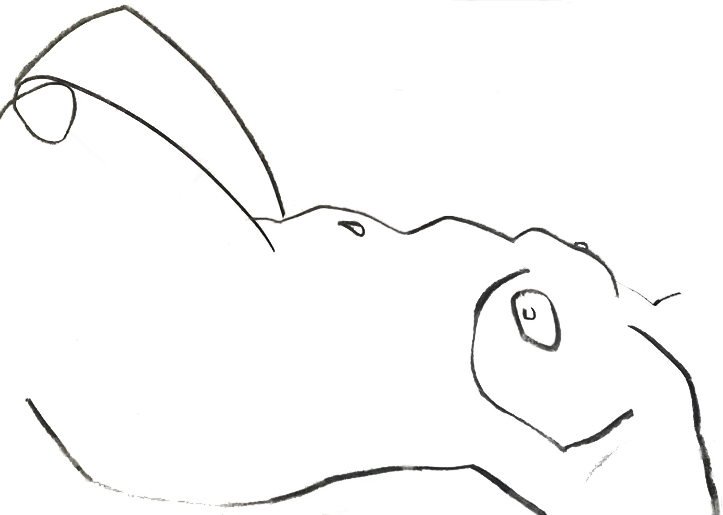
Picture this. You’re naked in a room full of clothed people, who are all staring at you intently. It might sound like a nightmare scenario, but at life drawing classes across the UK, nude models are stripping off for up to 200 participants at a time—all in the name of art. Life drawing, named for the study from life of the human figure, has grown in popularity in recent years, with classes taking place everywhere from nightclub venues like the Village Underground to the Royal Academy and National Gallery, alongside local community centres, schools and adult education centres.
Life drawing encourages creative expression in a sociable atmosphere, where phones are put to one side for a few hours, and classes can offer respite from the distractions of modern life amidst a likeminded community. Life models are increasingly in demand, and teachers will often seek a range of body types for their students to study. Models range from eighteen to upwards of seventy years old. While life modelling is well paid, it is rare to pursue it as a full-time career, and most will work on evenings and weekends.
“When I reached fifty, I was looking to do something that was a bit out of the ordinary,” Sarah Lowndes, now fifty-five, recalls. She posed on Folkestone beach for American photographer Spencer Tunick, best known for his nude mass photographic events. Here she met a number of body painting models and life models, and soon became involved in the community. With their encouragement she began to life model, and has gone on to model regularly at the Mall Galleries in London and the Royal Academy of Arts.
Lowndes has continued her career as a building surveyor while making space for her new passion after-hours. “Fifty is a big landmark in your life, and I have found something that I really love doing. I like seeing the artworks that people produce, I like talking to the artists, I collect all their drawings and put them up on my Instagram. It really gives me a lot back emotionally, and I’ve gone from just working for one group once a fortnight to doing it three or four nights a week. It has really changed my life quite dramatically.”

For Boyko Grigorov, who teaches disabled students to use assisted technology in his day job, his involvement in the scene has had a similarly transformative effect later in life. He is soon to celebrate his seventieth birthday. “It’s a great relaxer and a great way to unwind, I meet great people and I have fun. I don’t see it as work.” Grigorov’s first experience as a life model was in his native Bulgaria as a student during the 1970s. “My then-girlfriend was a student at the art academy, and she got me into it. I had the face of a brave man but it was not easy. It was difficult at the start but I got used to that.”
He resumed modelling in London over thirty years later, working at venues such as the Mall Galleries and the National Gallery. “If you imagine fifty or sixty people turn up on a miserable evening, cold and rainy, after a long day at work, they go onto a room and they spend two or three hours drawing instead of going home and sitting on the sofa. It’s fun for everyone, for the artists and the models.”
“When I came in, I could tell that the room was really cold. My willy just shrivelled right up, and I was like, okay, this is not ideal”
Not all models take to the work so instinctively. “It was basically exactly as nerve-racking as you would imagine it,” Angus MacDonald, who had his first experience of life modelling aged nineteen while at university, remembers. “I don’t think I’m any more or less exhibitionist than the average person. When I came in I could tell that the room was really cold, but with a few space heaters pointed at me. My willy just shrivelled right up, and I was like, okay, this is not ideal.” Male life models are less common than their female counterparts, a disparity that can partly be put down to gendered expectations of “male” versus “female” creative pursuits. There is also a residual shyness around depictions of the male nude form, and it only takes a visit to the Metropolitan Museum of Art or the Louvre to see that the naked female form dominates throughout art history.
“I also get underarm sweat from nerves, so I’m in this dressing gown that’s not mine, my willy’s shrivelled up, and I have this slightly pungent sweat,” MacDonald, now twenty-nine, wryly continues. “Then, before you know it, they’re telling you to take the gown off. And what are you going to do, not take it off?” It did get easier, although he recalls the “reveal moment” as a recurring source of anxiety. “After that, it’s just a case of letting the situation take over. You just zone out; it’s quite meditative. I really remember the scratching of charcoal on paper—it’s like a whisper.”

MacDonald admits that the experience has helped him to feel less shy to be naked. Body confidence is an inevitable theme of life modelling, as the fears that come with disrobing are enough to scare many away. To the uninitiated, the impulse to willingly strip off in front of a room full of strangers can seem alien, and it is a common misconception that models must feel entirely at ease with their physical appearance. “Like many people, I don’t like my own body particularly. I don’t stand in front of a mirror and stare at it,” the sixty-nine-year-old Grigorov reflects.
Life modelling can offer an opportunity to confront these negative feelings. “People like to look in the mirror and compare themselves with the best or someone who they admire. Our imagination works based on the images we get from the media, where everything is not real,” he continues. Sarah Lowndes agrees: “I like working with school children, aged sixteen to eighteen, because I feel that it’s important for them to see what real women look like. They all say, ‘How can you do this, aren’t you embarrassed?’ And I say, ‘No, I’m not.’”
Prudish attitudes to nudity can come as a surprise. One model, who poses for a number of sixth form colleges, was asked by a Catholic school to wear skin-coloured underpants. A colleague recalls her discomfort: “She felt weirdly sexualized in pants, far more than when she was completely naked. It just looked weird and sexy.”
“I recently started doing poses where you could see my vagina. I’m not trying to make some sort of feminist statement”
Grigorov has also had to overcome stigma around nudity and sexuality. “If I tell people that I model nude, they often seem to feel that I’ve touched on something that I shouldn’t. Instead of being curious, they just shut up—as if this is taboo. We’re not talking about my sexual life, it’s a completely different planet, but still there are some people who absolutely don’t understand the idea of life drawing.”
Francoise, a performer and contortionist who runs her own life drawing classes, sets out to challenge these attitudes. “I recently started doing poses where you could see my vagina,” she explains. “Most models choose poses where they cover it up—it’s seen as weird if you sit there open-legged. I’m not trying to make some sort of feminist statement, it’s more like, ‘Hey, this is also part of my body, can we normalize it?’ It’s not a rebellious act.” The desexualization of the body is a difficult line to tread, and models must protect themselves against unwanted attention. Several who I spoke to described feeling violated when they had been photographed against their wish—in one case, a passer-by stuck their phone through the door and took a snap before legging it away from the venue.
Occasions like this are rare however, and classes are run with careful respect for the boundaries of the model. For many, and particularly for female models, the experience can be surprisingly refreshing. As Lowndes describes, “People aren’t looking at you in a sexualized way, they are not there to be titillated, they’re there to learn something and improve their skills as an artist—and that’s very different to everyday life and how you perceive women.”

While it can be intimidating, posing naked also has the potential to offer a self-esteem boost. Lily Holder, who teaches regular classes alongside modelling, reflects on her changing relationship to her own image: “It’s been a gradual shift for me; I’m still a human being, and so my relationship with my body and my identity is not perfect, but I know it’s so much better than it would have been if I hadn’t started modelling. I feel comfortable, I feel confident, and I feel happy in the body that I’m occupying, so I can get on with other shit.”
For a pursuit that focuses so heavily on the human body, the question of disability is often overlooked. Indigo, a non-binary disabled life model and artist, runs life drawing classes that challenge the able-bodied status quo. Holder, a friend of Indigo’s, explains that they are part of a growing number of people in the scene who are trying to change the way that we look at figurative art and the body. “There have been a lot of academic, slightly boring takes on life drawing, but there are so many classes these days of a huge variety,” she says. “They’re asking, ‘How do we change the role of the model so that they are no longer silent and passive in the room?’”
“My relationship with my body and my identity is not perfect, but I know it’s so much better than it would have been if I hadn’t started modelling”
Undoubtedly, the experience of life modelling is an intensely physical one. Poses can last up to six hours, leaving models aching all over, while even shorter poses of one or two minutes can be highly demanding. “You learn quite quickly which poses don’t require you to hold or tense something. For the quicker ones, you can hold an arm in the air,” MacDonald reflects. “Sometimes you just pick a really awkward pose, and you’re regretting it within thirty seconds, and you know you have another four minutes to go.”
It is also a unique challenge to sustain the silence and stillness that comes with the job. “In a long pose you have to consider, ‘How do I keep this up mentally?’” Holder asserts. “That’s a long time to sit with yourself, and for a lot of people that might be their complete worst nightmare. It has a lot to do with the relationship that you have with yourself, and being comfortable with your own thoughts, because there’s nowhere to hide.”
So, what does it take to disrobe in front of a room full of people? Shyness stops many from taking the plunge, but it is important to consider the wider societal factors at play. In a culture often geared towards shame rather than openness, of modesty over baring all, life modelling can feel as frightening as it is liberating. “If you put a real naked body in a gallery you get such uproar, but there are paintings of naked women throughout. There’s such a disparity between the real body and the representation of the body,” artist and model Paul Kindersley reflects. A bigger shift in attitudes towards nudity is needed, and a deeper conversation around the often unhealthy relationship that so many have to their own body. Models must be physically and mentally strong. As Lowndes concludes, “There’s more to being a good model than just sitting still.”
All images © Lily Holder





